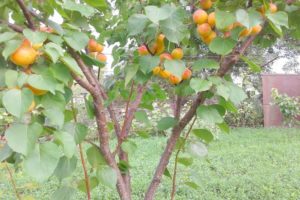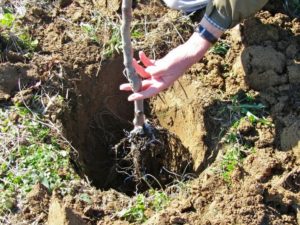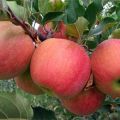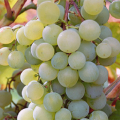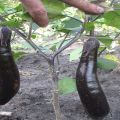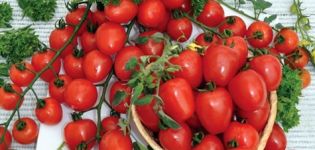Characteristics of the Champion of the North apricot variety, description of fruits and frost resistance
Apricot trees are not often found in Russian gardens. This is due to the fact that the culture is not only capricious, but also thermophilic. Thanks to the efforts of breeders, new unpretentious varieties have appeared, characterized by good immunity to diseases and excellent winter hardiness. The top ten crops for the middle lane include the Champion of the North apricot variety.
The history of the origin of the variety
On the basis of the Voronezh State Agrarian University, thanks to the efforts of domestic breeders, a new variety was developed that is resistant to frost. Authors of culture:
- A. N. Venyaminov;
- L. A. Dolmatova.
The basis was apricot varieties Triumph North, in contrast to which the Champion produces a good harvest in areas with cold and short summers. Initially, the variety was planned to be grown in the Central Black Earth Region of Russia. In an area where frosts are often replaced by unexpected thaws, and in spring there are late frosts.
Description of the variety
The culture is ideal for areas with variable climates, harsh winters and cold summers. The champion of the North takes root equally well in different regions, so he deservedly gained the love of summer residents.
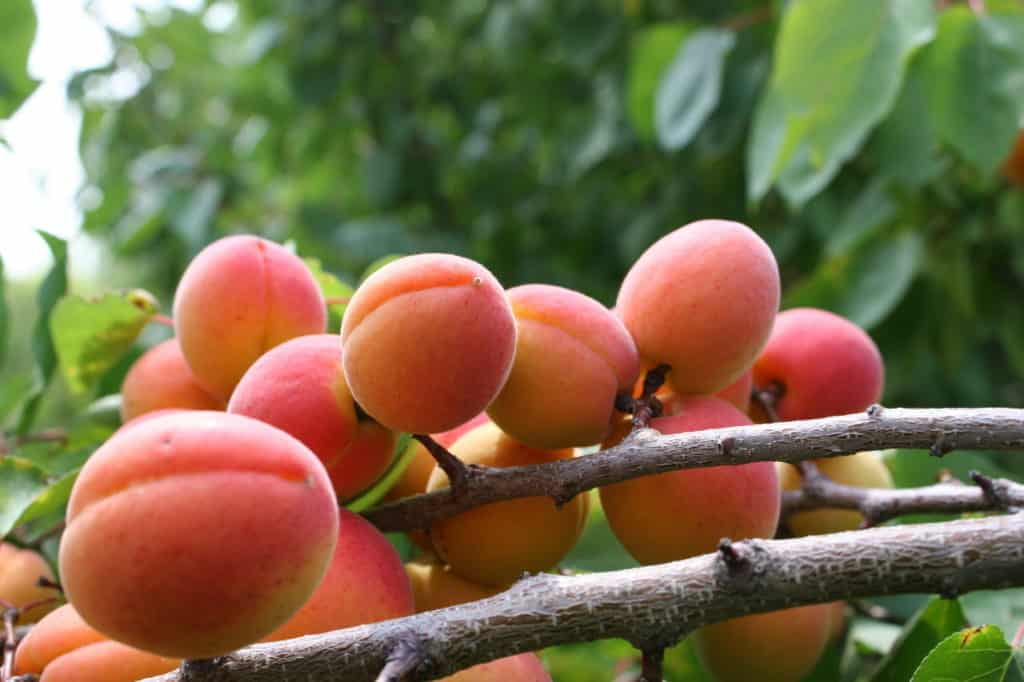
Description of the variety:
- crown is conical and thin, branches are powerful;
- the flowers are large, pale pink, no more than 3 centimeters in diameter;
- the tree is tall and reaches a height of 5 meters;
- bears fruit productively for about 30 years;
- the leaves are medium, during the growing season they change color from light green to red-orange;
- large fruits;
- medium juiciness pulp;
- the large bone is easily separated from the pulp.
According to the tasting assessment, the apricots were awarded 4.5 points.
Advantages and disadvantages
Positive properties include:
- early maturity;
- abundant fruiting;
- frost resistance;
- confronting common diseases;
- fruit size;
- taste qualities;
- thin crown, thanks to which the development of diseases is minimized.
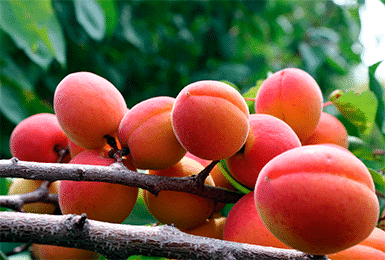
Disadvantages:
- requires pollinators in bad weather;
- the possibility of freezing of the kidneys when the temperature drops in spring.
The tree is susceptible to pest attacks, so additional protection measures will be required.
Characteristics of the tree and fruit
The culture does not require special knowledge of care, so everyone can grow a strong, healthy tree and get a regular, bountiful harvest. The Champion variety is self-fertile, but for a better result it is recommended to plant other varieties nearby, including the Triumph of the North.
Specifications:
- Medium late variety.Apricot blooms after warm weather in April. The first mature specimens appear in mid-July. The culture bears fruit within a month. Apricots ripen slowly but at the same time.
- The plant has a strong and thick bark, thanks to which the tree can easily withstand harsh winters and sultry summers.
- The kidneys can freeze during sudden temperature fluctuations. The Champion of the North is able to heal himself. Therefore, freezing of the buds for a tree is not a disaster. This does not affect the flowering rate and does not reduce the yield.
- Two years later, the apricot blooms for the first time, and gardeners will be able to evaluate the quality of the fruits from the third year after planting the seedling. The maximum yield is obtained from the age of five.
- Fruit weight is about 65 grams.
- Apricots have a high level of transportability. Ideal for canning and fresh consumption.
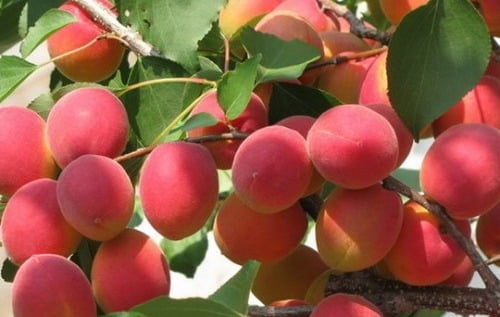
With prolonged drought, it is required to regularly water and mulch the soil under the plant.
Features of planting and care
When planting seedlings, follow the rules:
- the seedling pit is prepared in the fall, planted in the spring;
- give preference to a light, windless place, there should not be high plantings around, which cover the sunlight with their crown;
- the culture does not tolerate waterlogging, therefore, it is planted in a dry area;
- the variety does not belong to completely self-fertile, therefore pollinators are required, which are planted nearby;
- before planting, it is recommended to soak the roots of the seedlings in water for two hours;
- buy a plant in a nursery, otherwise there is a high probability of acquiring a "wild" seedling.
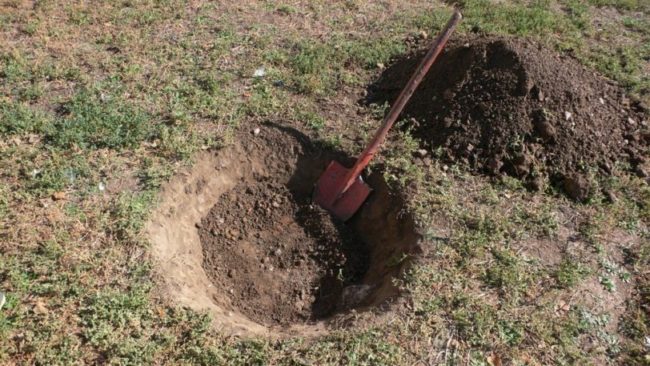
The main advantage is undemanding care. The culture is watered several times per season:
- in early spring;
- in May;
- in early July;
- at the end of summer.
For abundant fruiting, the plant is fed three times per season:
- Nitrogen in June.
- In July - nitroammophos.
- In August - a mixture of phosphorus and potassium.
For the first two years, it is recommended to mulch the seedlings and systematically loosen the soil around the trunk. This procedure will help air and moisture to enter the ground more easily.
To prevent the formation of cracks on the trunk after the leaves have completely fallen off, the tree is whitewashed in autumn.
For this, a special mixture is prepared, consisting of:
- 10 liters of water;
- 2 kg of lime;
- 400 g of clay;
- 400 g of copper sulfate.

It is not required to artificially form the crown and cut the tree. Only dry and damaged branches are removed. Then the places of the cuts are treated with garden pitch.
Prevention and control of diseases
The disadvantage of the variety is its low resistance to fungal diseases. When a culture is damaged by moniliosis, they are treated:
- "Botran";
- "Nitrafen";
- "Polykhom".
The affected areas of the plant are removed and burned.
In case of defeat by clasterosporium:
- Damaged shoots are removed and burned.
- The wounds are treated with copper sulfate and coated with garden varnish.
Prevention:
- destroy weeds;
- treat the plant with fungicides;
- fallen leaves are removed in a timely manner.
Pests do not cause significant harm to healthy, developed trees. Therefore, apricot does not need special methods of fighting insects.
